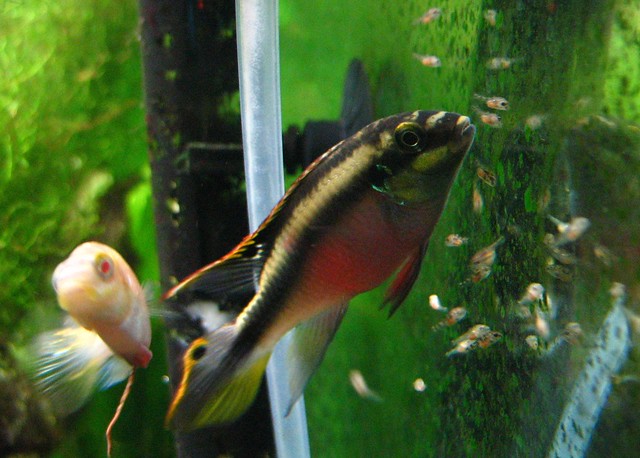 |
| Yellow Betta Fish - Photo by Daniella Vereeken |
Environment: Are the cups clean or are they perfect for soil wet? Is there a bad smell in the rhythm? It could be from dead fish.
Color: Bettas are admitted for their vibrant coloring. Of course, there are variations that are pallid or white. supplementary likely, however, the dull color is a sign of emphasis or poor health.
Did you know the color variations you can look for? Well here is a snippet of information just for you.
----------------
Betta Colors
----------------
Selective breeding has to produce a rainbow array of colors for Bettas. Some of the more common options are listed below, but you can find more variations from breeders.
Red - red shades run from bright to dark burgundy and brown
Apricot - sometimes called peach too. This is a soft pastel shade.
Yellow - from golden to lemon. A Betta that is a mix of yellow and black can be a Chocolate if pretty solid-colored, but if the yellow scales are outlined, it's called a Pineapple Betta.
Green - the color turquoise is a genetic variant on green. A very dark green is very rare and highly prized.
Blue - royal blue, cornflower blue, and steel blue shades are all available.
Purple - colors can be pale (lavender) to dark (violet).
Black - solid smokey or with lighter fins, called Black Lace.
White - this opaque color is not albinism, and you can tell as these Bettas will have black eyes.
Albino - a rare but natural occurrence like with other fish and animals. A true albino will have red eyes.
Multi-colored - these Bettas have mixed colors, and this name covers all fish that have no predominant color-tone.
Behavior: You want an active fish, floating upright, not spending too much occasion on the boat. If a betta fish is motionless it could be sleeping. Don't dig on the glass as that commit emphasis it out. Be subtle trying to obtain his stress.
Fins: The fins should be liberated from wholes or tears, and spread fairly instead of clamped together.
Scales: The scales should be flat and smooth. They should ' t be loose or peeling.
Gills: Make sure the gills are smooth, not red or stringy.
Eyes: The eyes should be clear and not be bulging or sunken.
Hope this article kept you more informed about the fascinating world of betta fish
|







